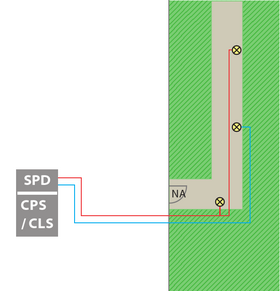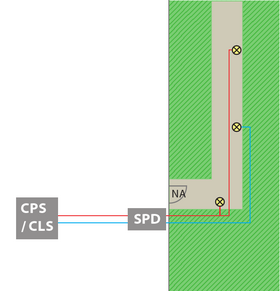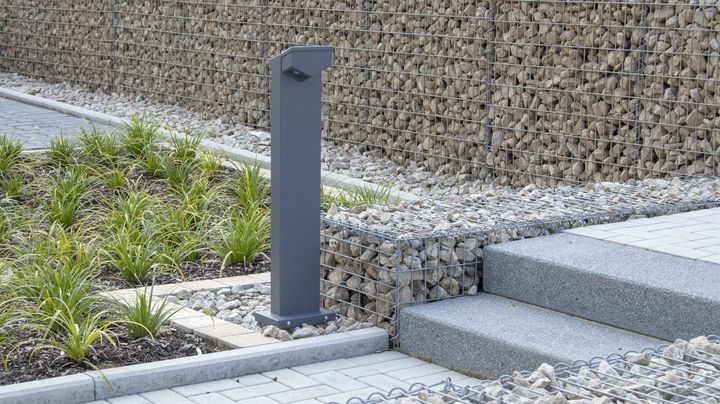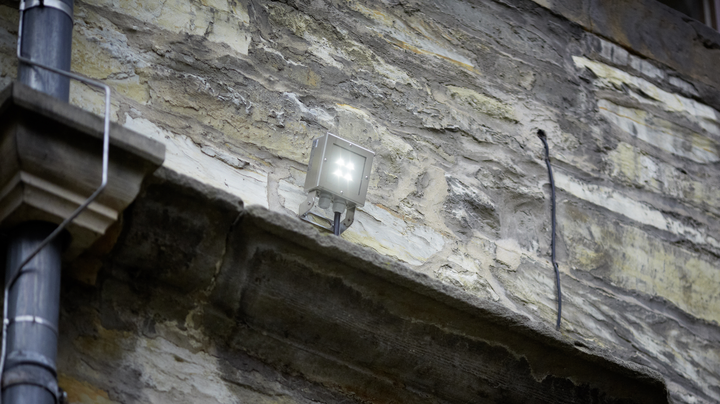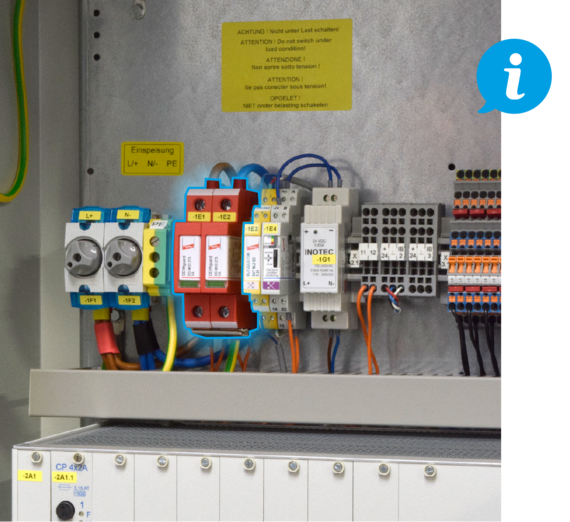Safety lighting outside buildings
New challenges facing planners, fitters and manufacturers
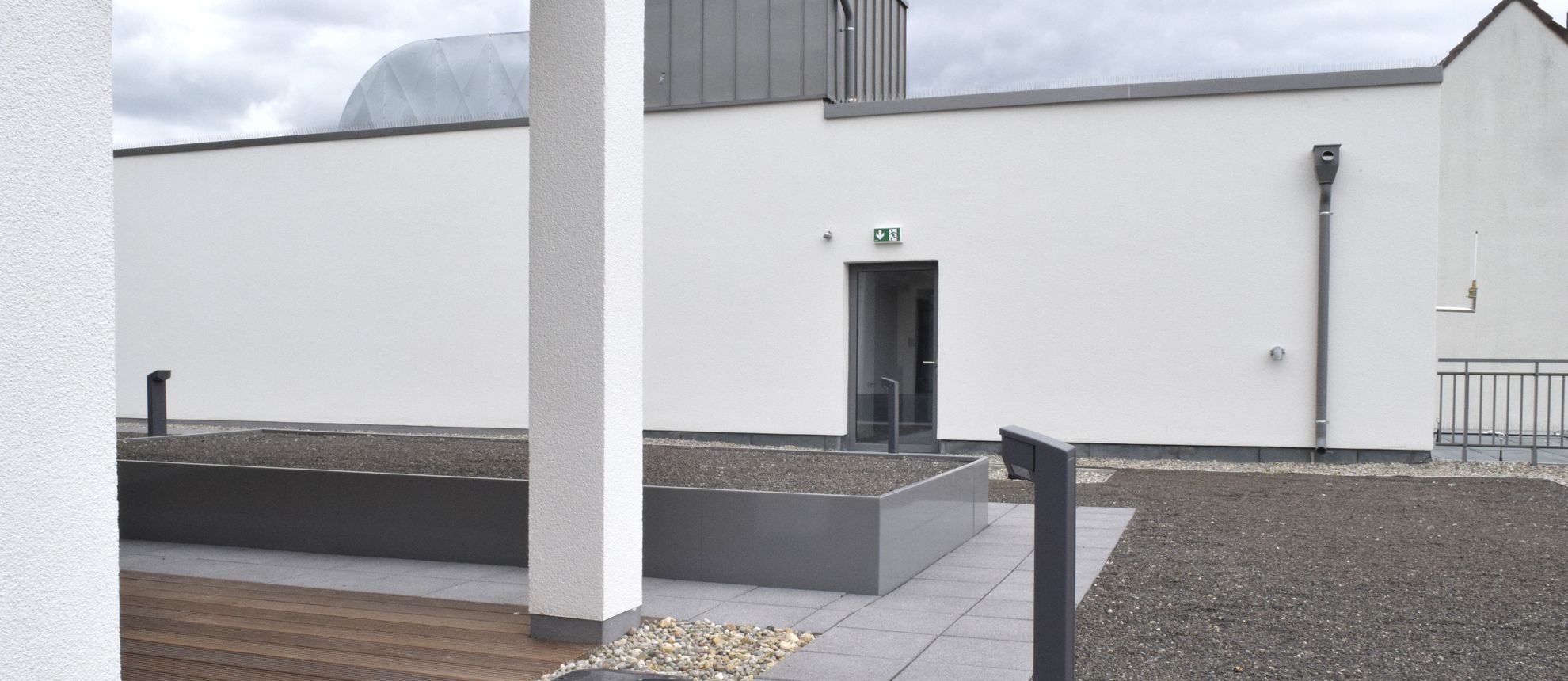
If a dangerous situation arises in a building, or the mains power fails, just evacuating the people is not enough – outdoor safety lighting must also ensure illumination of the path to a safe meeting point.
For some years now, EN 1838 requires provision of external lighting to a safe area. Said safe area is a marked zone where people can meet safely and are not at risk from the emergency. Similar wording can be found in ASR3.4/7, and in specimen legislation governing sales areas* or the specimen legislation governing meeting places* issued in July 2014. The latter requires safety lighting all the way to public areas for visitors and employees. These requirements are posing new challenges with respect to professional installation for planners, fitters and even manufacturers of emergency lighting.
Points to consider with regard to external lighting
Luminaires mounted straight onto the outer wall of a building to illuminate an emergency exit from outside the building are easily connected to an emergency lighting circuit nearby. Care must, however, be taken to ensure alternating wiring between the last interior luminaire and the outdoor luminaire (Fig. 1). If external lighting is to be installed free standing or along paths to the safe area, however, they need to be incorporated into the overvoltage concept. In this case, for example, the emergency lighting circuits can be fitted with appropriate fuses right at the entrance to the building or in the emergency lighting equipment (Fig. 2). When planning, we therefore recommend separate emergency lighting circuits for outdoor luminaires (exterior lighting).
Free standing outdoor lighting or luminaires along paths should be incorporated into the overvoltage concept, or the emergency lighting circuits can be provided with fuse protection at the entrance to the building or right in the emergency lighting equipment. (SPD = secure protected device)
*The aforementioned specimen regulations issued by the conference of building ministers of the German states serve as a basis for assessing various requirements and may deviate from the applicable, legally binding building codes of the individual federal states. As such, the specific requirements for each federal state must be observed.
Choosing suitable luminaires
There are various options to consider when choosing luminaires. Optimised bollard luminaires can be used to provide safety lighting, or luminaires with locking wall brackets that are equipped with special lighting technology to provide the necessary illuminance of 1 lx even from greater distances despite their low power consumption.
Overvoltage protection ex works
INOTEC’s CPS central power systems can be fitted with overvoltage protection (depending on the configuration of the systems) at the factory at a customer’s request (see photo). Installation is not possible in the small decentralised CLS systems. In this case, the requisite components must be mounted externally.
Alternative:
Column luminaires

Column luminaires are a further option. To eliminate the need to incorporate general lighting into the safety lighting concept, which would necessitate testing of the relevant components, we recommend separating general and safety lighting. BEGA 84135 can do this, for example. This column luminaire has a separate LED circuit for safety lighting. As a result, safety lighting performance is optimised despite the small size of the battery in central power systems. It can even be connected to the decentralised 24 V CLS system.
By the way, there are currently no precise specifications in the applicable standards or regulations governing the illumination of a meeting point. The only requirement is signage with the appropriate symbol.

